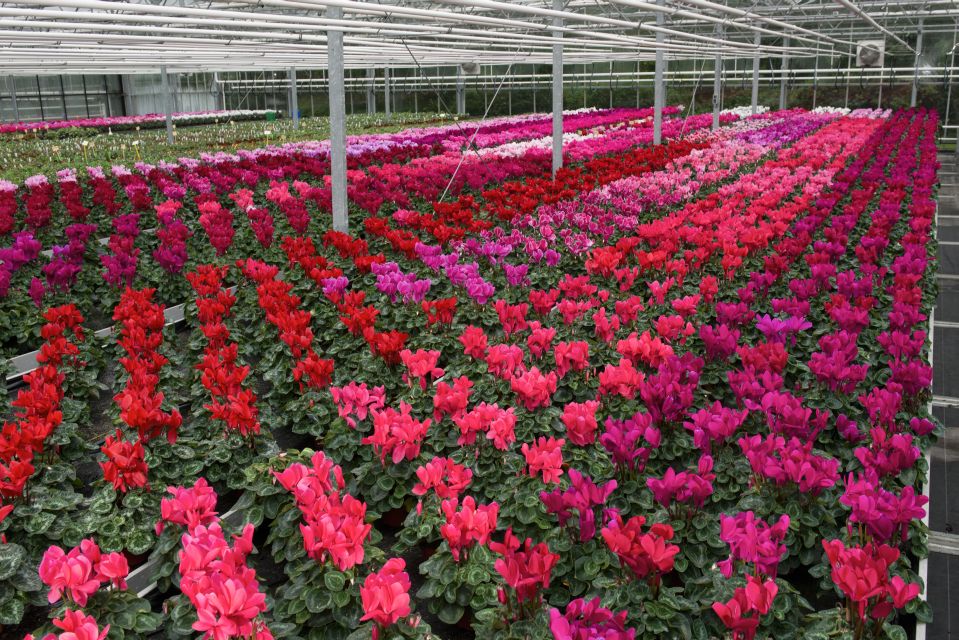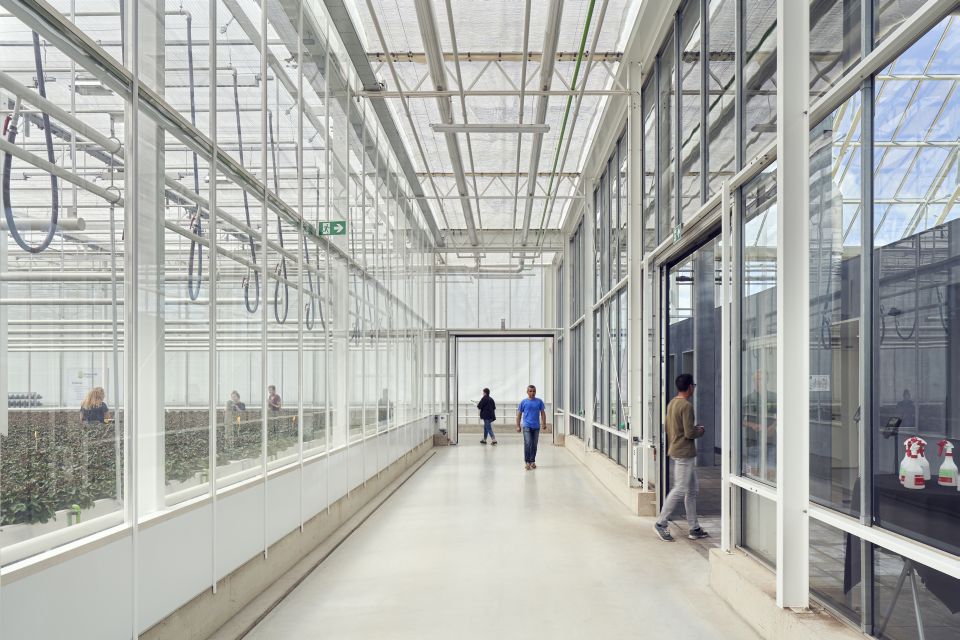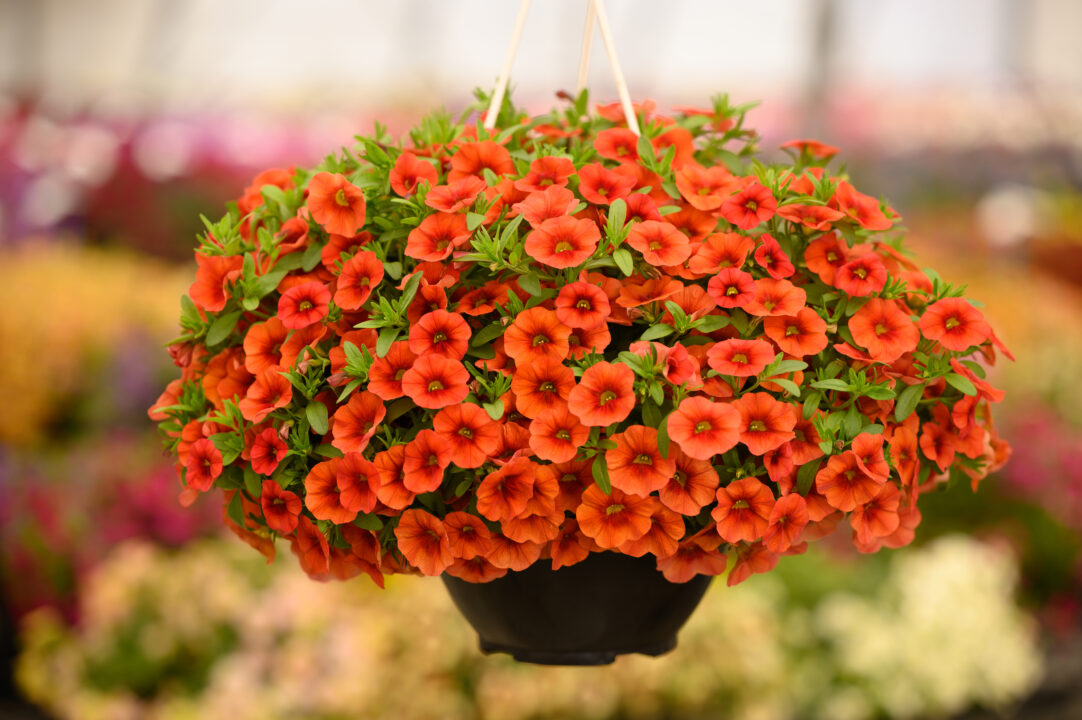Sustainability Is the Cornerstone of Schoneveld Breeding

‘Leopardo’ from Schoneveld is a large, heat-tolerant cyclamen with large flowers and strong stems. Photos: Schoneveld
For Peter van de Pol, Owner of Schoneveld Breeding, working with plants is in his blood. His father, Jan van de Pol, worked as a potato farmer in the Netherlands. Peter grew up discussing challenges over the dinner table with his family. Many of the conversations centered around two topics. First — the weather, and how it may impact the harvest. Second — how to price and add value to a kilogram of potatoes, such as turning them into French fries or chips.
Van de Pol brings that same vision to his work with potted plants. Schoneveld is dedicated to bringing value to its products, both economical and ecological value. Growers play a major role in how Schoneveld adds value to its products, he says, such as offering plants that require less labor-intensive work or creating product-market combinations for a better price for the growers.
“We see it as our vision and take it as our responsibility to add value to our chain partners, and the grower is a central part of that,” van de Pol says. “There’s value in less labor or working with plants that are easier or more sustainable to grow. The frustrations of the past, as a potato grower not being able to add value to a kilogram of potatoes, has formed me and that’s what makes the team and I so dedicated.”
Sustainable and Economical Breeding
Van de Pol bought Schoneveld Breeding from Patericus Schoneveld in 2007. At the time, the company offered two products and flower seeds, all of which were made in one location. Van de Pol wanted to spread the risk and offer continuing education and development on plant breeding.
“Over the last 15 years, we have invested in development of new flowering pot plants, an external location for reliable and high-quality seed production, plant breeding techniques, and (pre)breeding professionals,” he says. “Our employees are the biggest ambassadors of our product.”
To emphasize and stimulate teamwork and to be able to speed up breeding, the company opened a professional breeding location as the latest (but not last) investment for continuing and improving its future breeding.
In 2008, Van de Pol confronted the team with the question of what their distinctive character was or should become as a breeding company. After all, there are other professionals who can breed plants.
“There are other unique qualities to offer besides new colors and shapes,” he says.
For example, van de Pol says the team can breed plants that are less sensitive to ethylene, a hormone that makes the flowers age, or breeding for heat tolerance so plants experience less stress under warm conditions. The breeders are also focusing on compactness so less plant growth regulators are required during production.
“This is a new way of thinking about breeding,” van de Pol says, comparing it to Elon Musk’s introduction of the Tesla.
“He created literally a new platform with batteries and added four wheels, and that was his Tesla,” van de Pol says. “Our ‘Paradiso’ from Primula acaulis is a good example of where we started with a new breeding plant platform, too.”
It took eight years to develop ‘Paradiso’. Since the variety is genetically compact, there is no need to spray plant growth regulators (PGRs), which saves on labor and chemicals. In the Netherlands, van de Pol says many PGRs are not permitted.
If you look carefully at ‘Paradiso’, you can tell that the flowers are not touching the leaves and the leaves do not touch each other. This open shape means that moisture does not collect between the leaves, so there is also no need for fungicides, which reduces production costs.
“This is our unique selling point,” van de Pol says. “We’re trying to add value with less chemicals and it costs less to produce our plants.”

Area Manager North America Kathy McKay and Growing Advisor Ton Koers are key team members at Schoneveld.
Primula as Industry Gamechanger
Kathy McKay, Area Manager North America for Schoneveld Breeding, says primula is a common early season crop. Many growers produce it, and there had been no product changes for years. Schoneveld’s breeders wanted to make it better for growers and consumers. They offer an early, mid, and late series for Primula acaulis. Previously, the crop required vernalization, but these various offerings can be tailored to growers in different regions.
“If you live in a hot area or you need your crops earlier, you can plant the early series because it doesn’t require a cooling period,” McKay says. “That changed the game for a lot of people. If they were in a hot area, maybe they didn’t produce it before. Or if they did, they had blind shoots or had no flowers on their plants.”
The mid series is similar to regular primula, but is more compact with an open habit. The late series is ideal for mountainous areas and for growers who need a later crop that requires a cooling period. If a grower plants all three series and wants them to flower January through March, they can all be planted the same day in October.
“That was a complete gamechanger in the world of primula,” McKay says. “We have seen our sales grow exponentially with this crop. It gave this species new life.”
Schoneveld strives for innovation and sustainability, McKay says, and the sky is the limit.
“Why buy a BlackBerry when you can have an Apple?” she asks.

Schoneveld’s PlantXperience facility is surrounded by a glass corridor to make it possible to see the products without entering sensitive areas. This allows visitors to take a closer look at the breeding and cultivation process.
Cutting Edge Technology
Both innovative and sustainable practices can be found at Schoneveld’s new facility, called PlantXperience, in Wilp, Netherlands. The team outgrew its former location, a 1930s house near the greenhouse. Employees needed a new, state-of-the-art facility, but enjoyed the charm at the house. The PlantXperience facility incorporates both. There is a house within a greenhouse. There are offices upstairs and labs downstairs, McKay says. The facility is surrounded by a glass corridor to make it possible to see the products without entering sensitive areas.
The new building allows colleagues to see each other, greenhouse employees can see the employees in the office and vice versa. This stimulates the team work enormously, but it also allows customers, students, and suppliers to take a closer look at the breeding and cultivation process.
“In this we try to create ambassadors and try to make them understand how plant breeding can add value,” van de Pol says.
“You have to practice what you preach,” he says of Schoneveld’s commitment to sustainability.
The PlantXperience facility uses a closed water system and recirculates 100% of its water. The facility needs no external water. If the Netherlands were to have no water, the facility could continue to operate without interruption for one year, McKay says. With the reduced water use, growers at the facility also save 20% on their fertilizer needs.
Van de Pol is currently working on setting up a new trial with the local water authority in the province where Schoneveld is located. This trial would test using household wastewater to make fertilizer.
“Normally these valuable elements are removed and flushed into the river. Our ambition, however, is to retain them in a closed water purification system and make new fertilizer from it,” he says. “Saving 20% of fertilizer is not enough for me.”
Schoneveld uses green energy, van de Pol says, adding that there is a 12 megawatt (MW) solar panel park on site. He is also working on a test to create ‘green’ hydrogen gas, which would be mixed with natural gas to heat the greenhouses. By mixing hydrogen gas with natural gas, the amount of natural gas that is burned can be reduced.
To search for more sustainable solutions, reducing gas to heat the greenhouse, Schoneveld is also looking to partner with a nearby waste facility. Schoneveld would collect the biogas and burn it in an engine, which creates electricity and heat to warm up a heat buffer with water. McKay says the PlantXperience facility, which opened in 2018, meets most of Europe’s green energy standards through 2027.
“Sustainability is not just a word, it’s a verb,” van de Pol says. “You need to do it and actively work on it.”
Global Reach and Humanitarian Efforts
Schoneveld also has a second seed production facility in Tanzania near Mount Meru. Looking for a location near the equator, the team selected this area for its continuous spring climate. Tanzania has the opposite production season from the Netherlands, allowing for production of two cycles of crops
per year.
In this rural area of Tanzania, many employees did not know how to read or count, van de Pol says. The training team started the breeding schedule with shapes and colors, such as crossing pictures of a pink elephant with a yellow zebra, or a purple crocodile with a green monkey. Schoneveld hired a teacher to teach classes on reading, writing, math, and English as a second language (ESL) in the afternoon and evening.
“As we were doing that, we found out that the kids of our employees had to walk to school very far, some of them for at least two hours,” van de Pol says. “Because of that, many kids did not go to school. We thought if we had a teacher already for our own employees, maybe we can employ the same teacher for teaching the kids.”
In 2009, Schoneveld built a schoolhouse and taught 25 children. Now, there are six classrooms to teach 450 kids. There are plans to build two more classrooms to accommodate primary and secondary school children. Once this schooling is completed, students may choose to attend a university or may be inspired to work for Schoneveld like their parents.
“It’s a nice side thing to do. It’s also important to educate the existing employees and hopefully future employees,” van de Pol says. “It’s great fun to be able to do this, and it’s lovely to see the kids playing.”
Operating a company is about more than just revenue, van de Pol says. It is exciting, but there are also challenges and struggles. Creating and selling a unique product is key to being an entrepreneur.
“You need to make money to be able to invest, improve your product, pay the bills, but in the end it’s about what you leave behind — whether that is well-educated families in Tanzania or flowering pot plants that can be grown more sustainably so we can contribute to a flourishing future for next generations.”

Schoneveld plans to introduce a new line of gerberas soon, called Joybera.
New Products at Schoneveld
Growers should be on the lookout for a new color in the Super Serie Fusion large-flowered cyclamen — Neon Pink. The two-tone bloom makes Super Serie Fusion a speciality item. It will soon be available in midi format, too.
Schoneveld’s breeders have also been hard at work on other crops recently. Behind the scenes, they have developed a new gerbera. Named Joybera, this new variety was on display for the first time at FlowerTrials earlier this year in the Netherlands.
Other products that Schoneveld offers include Primula Touch Me Series, Primula Original Series, Primula Perola Series, Ranunculus Sprinkles Series, and Campanula Florentes Series.









